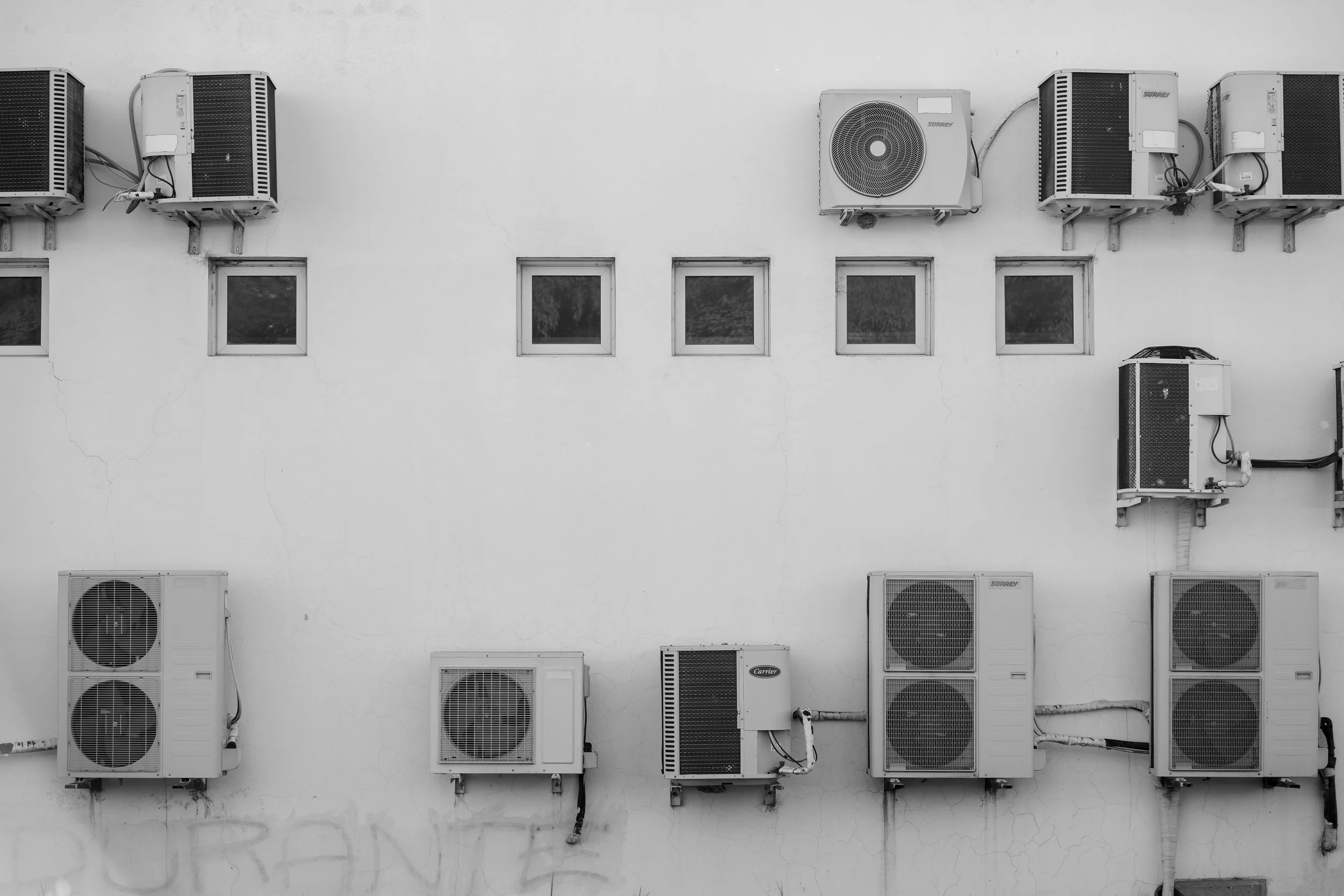Photo by Tomás Asurmendi via Pexels
Washingtonians know summer humidity all too well. It does not just cling to sidewalks and metro platforms, but condenses inside every air conditioner in the city, producing gallons of water that are supposed to leave quietly through a narrow PVC pipe called the condensate drain line. When that pipe clogs, water backs up, pans overflow, float switches trip, and ceilings get stained fast. In condo buildings, several units may share drain stacks, so one neglected line can become everyone’s problem.
Why DC condos feel this pain every July and Augus
Our mid‑Atlantic summers are known for swinging from thunderstorm downpours to blazing sun. That means high dew points, lots of latent moisture and long AC run times, which translate into more condensate. Keeping windows closed while cooling prevents extra moisture from loading the system.
So, what can we do about it?
Make a monthly flush a habit
Most techs and several property managers recommend pouring about 1/4 to 1/2 cup of plain white vinegar into the cleanout port once a month during cooling season. Let it sit for 20 to 30 minutes, then follow with a cup of water. Vinegar is acidic enough to deter algae, yet gentle on plastics and metals.
Bleach vs. vinegar: choose the safer option
Older DIY guides still suggest diluted bleach. It will kill slime, but it can corrode metal parts (coils, copper lines) and degrade PVC glue, and the fumes are nasty in a closet. Unless your manufacturer explicitly allows it, stick with plain white vinegar. SBPHA/C explains the corrosion risk. A+ Air Conditioning recommends a ¼–½ cup vinegar flush, and HomeServe notes you should never mix vinegar and bleach.
Watch the outlet like a weathervane
On a hot afternoon, you should see a steady drip from the exterior termination. If the drip slows to a sporadic tap or stops, power the system down and check for a clog before the pan fills. A wet/dry shop vacuum on the outside outlet can pull out sludge in a minute or two. Seal the connection with a rag to improve suction.
Keep the drain pan dry and visible
Standing water in the primary pan is a red flag. Rust streaks or mineral crust around fittings tell you water sat there before. Wipe the pan dry, then track the cause.
Test or install a float switch
A float switch or other water‑level device should shut the unit off before overflow. Gently lift the float to confirm it works. If you do not have one, codes allow this as an approved safeguard and it is a smart upgrade.
Airflow matters: change filters on schedule
Restricted airflow freezes coils, which then thaw into extra water. Energy.gov and ENERGY STAR both say to check filters monthly in heavy-use months and change them at least every three months, more often with pets or dust.
Design details that quietly decide everything
Drain lines need continuous downward slope. A common rule is at least 1/8 inch drop per foot of run. Dips or long flat sections let slime settle and block flow. The International Mechanical Code (IMC) backs this with clear drainage slope requirements.
Early warning signs you should not ignore
Musty odors from vents, sudden system shutdowns when the thermostat still calls for cooling, weak cooling, ice on the coil or refrigerant lines, water stains near closets or ceilings, and no visible drip outdoors are all clues the line is blocked.
When to call a pro right away
If water is actively leaking, the float switch trips repeatedly, you see ice on coils, you cannot locate a cleanout, or you suspect the system lacks a secondary pan where code requires one, bring in a licensed HVAC tech. Pros can blow the line clear with compressed air, sanitize pans, and add time‑release biocide tablets when appropriate.
Quick checklist you can paste on a closet door
Turn the system off before you touch the line. Flush with vinegar monthly. Verify steady dripping outside when the AC runs. Keep the pan dry. Test the float switch. Replace filters regularly. Schedule a spring tune‑up so the line is clear before peak humidity.
Bottom line: A vinegar flush once a month, a glance at the pan and outlet, and timely filter changes will stop most condensate disasters before they start. Put a reminder in your calendar now and you are already ahead of the season.

